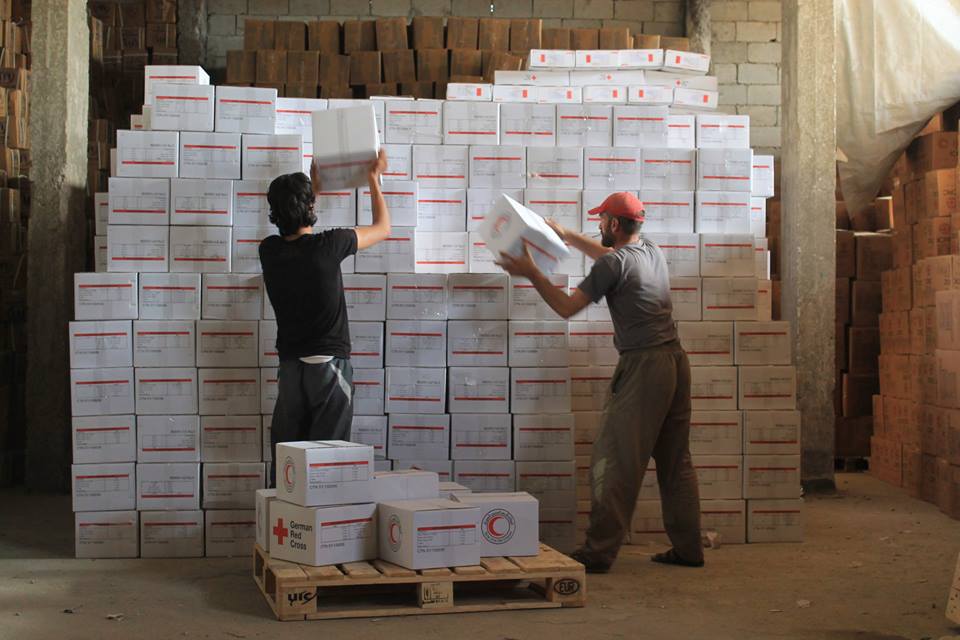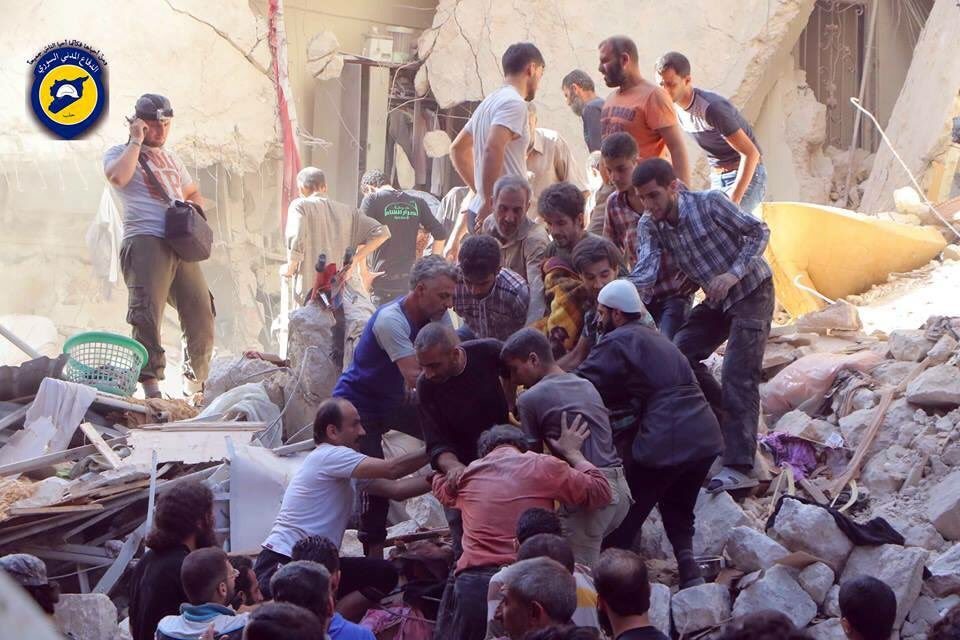
The humanitarian pause in Aleppo declared by Russia ended without any evacuation of civilians or withdrawal of rebels, as the Russian airstrikes were resumed on rebel-held parts of Aleppo.
Assad regime, backed by Russia, said on September 22 it was starting a new wide offensive to recapture the rebel-held parts of Aleppo where more than 275.000 civilians are besieged, after a week-long ceasefire was declared officially over on 19 September.
Russia has then announced in October a humanitarian pause in the attacks on eastern Aleppo, but it failed and ended after three days as Assad regime’s jets and helicopters resumed their raids on the city dropping barrel bombs, cluster bombs and bunker busters.
On Friday 29 October the rebel forces started a new military operation to break the siege imposed on 275.000 civilians in eastern Aleppo, employing heavy shelling and suicide car bombs, was mainly focused on the city’s western edge by rebels based in the countryside outside Aleppo.
Russia’s defense ministry announced then on Wednesday 2 November a new humanitarian pause and said that six exit routes will be open on Friday for ten hours, from 9am to 7pm, to allow civilians in eastern Aleppo to leave, along with two new exit routes for the fighters to withdraw from the area.
The rebels have rejected Russian demands that they withdraw from the northern city of Aleppo by Friday evening, according to officials in rebel factions, and said they will go on with their military operation.
“This is completely out of the question. We will not give up the city of Aleppo to the Russians and we won’t surrender,” Zakaria Malahifji, of the Fastaqim rebel group, told Reuters news agency on Wednesday.
“This announcement is worthless … We don’t trust the Russians or any of their cheap initiatives,” Yasser al-Youssef, a member of the Nureddin al-Zinki rebel brigade in Aleppo said.
The rebels did what they promised and stayed in their positions, while no civilians were evacuated too.
Syrian state media and Russia’s defense ministry said rebels fired rockets at one of the eight passages open for civilians and rebels.
An official based in Aleppo in Syria’s reconciliation ministry said that “fighters from al Qaeda’s former Syria branch were preventing both rebels and civilians who wished to leave from doing so, and that factions appeared determined to fight on.”
“Jabhat al-Nusra is in control of all of the crossings. For civilians, it’s impossible to leave as long as Nusra controls the area,” he said.
“We’re communicating with civilians and even with some militants, the ones who want to leave. Unfortunately, when militants want to leave it’s individual cases, not (entire) factions handing themselves over.”
Renewed bombardment
Residents in Aleppo seemed t be sure that the pause will end and the airstrikes will be resumed again.
“Nothing can be done. Nobody can stop the planes,” said Bebars Mishal, an official with the “white helmets” civil defense volunteer group in eastern Aleppo.
After the end of the pause, reports by opposition sources said that the airstrikes have already started in the areas surrounding Aleppo.
Russian jet fighters perpetrated on Friday a new massacre in Kafr Naha town in Aleppo western countryside, killing tens of people and injuring many others, according to activists.
Residential areas in Kafr Naha town in Aleppo western countryside were targeted by parachute-borne bombs, which claimed the lives of 14 civilians and injured 25 others including women and children, activists said.
Civil defense volunteers rushed to attack site to rescue the injured and recover the bodies, fearing that the attack would be hit again by Russians.
The White Helmets
13killed and 20 injured after a warplane targeted civilianhomes with a parachute retarded bomb in Kafr Naha #Aleppo today. pic.twitter.com/moPlmzMGdK— Behzad Moezi (@BehzadMoezi) November 4, 2016
The Battle for Aleppo
The Assad regime forces, backed by Russian air power, Iranian ground forces and Shi’ite militia fighters from Iran, Iraq, and Lebanon, has been tightening its grip on rebel-held districts of Aleppo this year, and this summer achieved a long-held goal of fully encircling the area.
Rebels opened a corridor to the east for the month of August after pro-government forces first applied a blockade in July, but they were not able to hold it as the government and its Russian ally pounded the gap with artillery and airstrikes. Pro-government forces reapplied the siege in early September.
Assad regime, backed by Russia, said on September 22 it was starting a new wide offensive to recapture the rebel-held parts of Aleppo after a week-long ceasefire was declared officially over on 19 September.
There are about 275,000 people trapped by the siege of eastern Aleppo, where civilians are suffering through daily bombing, including by bunker-buster and incendiary weapons, and through starvation, as limited supplies run out and aid convoys are blocked from the city.
On Friday 29 October the rebel forces started a new military operation, employing heavy shelling and suicide car bombs, was mainly focused on the city’s western edge by rebels based in the countryside outside Aleppo.
In the first three days of the operations the rebels were able to advance and seize new areas and their shelling on the regime-held areas killed 46 civlians at least including children.
However, the rebels’ attack was repelled in many fronts be Assad regime’s forces and the battles have slowed down after the fourth day.
The area has been subjected to a ferocious campaign of aerial attacks by Russian and Syrian government warplanes, and hundreds of people have been killed in recent weeks, according to opposition activists and trapped residents.
Recovering full control of the rebels’ last significant urban area would be the most important victory of the war so far for Assad, strengthening his control over Syria’s most populous and strategically important regions.



